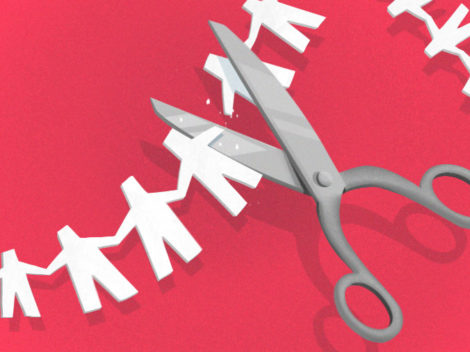SoftBank’s capital campaign continued this week on the news that the firm’s Vision Fund is deploying $300 million into dog-walking startup Wag.
The round is notable for two reasons:
- The transaction constitutes a significant percentage of the company. SoftBank will own around 45 percent of Wag, valuing the firm at around $650 million according to Recode.
- SoftBank is well-known for providing liquidity to extant shareholders in its mega-deals; however, according to Recode, the deal didn’t include equity from prior investors. (The company declined to answer Crunchbase News’ question on the secondary issue.)
So SoftBank just piled a huge sum of primary money into a company that had raised far less in aggregate. In exchange, Softbank has a non-majority stake.
It’s an odd situation and one that, in other cycles, would be anomalous. However, the distortive SoftBank Vision Fund effect is bending financial gravity in all sorts of ways that we shouldn’t take for granted.
Follow Crunchbase News on Twitter & Facebook
To get a leash around the deal, let’s quickly examine Wag’s funding history and then work to understand why the startup would need, want, or even know what to do with a $300 million check.
Wag’s Rapid Rise
Wag first clipped my radar when the service launched in San Francisco around April of 2015, announcing a seed round led by Freestyle Capital at the same time. Back then, San Francisco was its second locale, following an initial debut in LA.
The firm picked up a modest $2.5 million in the round, which saw participation from a host of other investing groups. Crunchbase lists 13 total participants in the transaction, making it something of a party round, albeit one with a leader.
Crunchbase data then lists a $4 million Series A for Wag landing in the first month of 2016. It was a small Series A deal at the time, but it was also raised less than a year after its seed round. The firm went on to raise a $15 million Series B in October of 2016, again under a year from its prior capital event. That rapid-fire pace of funding didn’t stop. Wag raised another $40 million round in April of 2017, according to Crunchbase, nearly doubling its capital raised to-date.
And then, of course, its latest capital event came less than a year after that, dropping $300 million into its coffers in a single go. The firm’s $40 million round nearly doubled its prior raised capital. The SoftBank check pushes that number up by a factor of four or five.
So the pace of the new capital isn’t a surprise given Wag’s history of raises. But the total amount for Wag’s latest deal remains intriguing.
An IPO-Sized SoftBank Check
SoftBank coming along and pouring hundreds of millions of dollars into a startup isn’t surprising. Just last week Crunchbase News wrote about Katerra’s recent Series D which brought $865 million to the firm. Its largest, preceding round of known size was just $130 million. That came less than a year before SoftBank dropped the bigger check.
So there isn’t much odd going on here from a check-size perspective when we consider the broader Vision Fund purview. That said, if you are asking why the fuck does a dog-walking startup need $300 million after raising $60 million or more to walk dogs, know you aren’t alone.
However, there’s perhaps some logic to SoftBank’s play. Hunter Walk, a venture capitalist from Homebrew, had a workable explanation of what the capital fountain might be up to:


While I normally wouldn’t want to cede that amount of digital real estate to technology’s monied classes, Hunter has a point.
To summarize his notes, SoftBank is investing so much into Wag at once to effectively freeze its market from new competition. It’s the use of cash as a cudgel, beating back potential entrants to the market while protecting Wag against any current competitors. Thus, SoftBank is more than happy to overbuy shares of Wag as it is effectively deciding that the startup will win its market through competitive advantage via cash burn.
So why does SoftBank really care about the American pet care market? After all, the SoftBank Vision Fund was at least partially formed to pursue something quite different. This TechCrunch headline from February 2017 is illustrative: “Superintelligent AI explains Softbank’s push to raise a $100BN Vision Fund.”
It’s hard to square that ambition with Wag.
We also have to consider what happens if the economy isn’t as strong and the current boom is cut short sooner than bulls anticipate. SoftBank’s investments make more sense if the economy will remain a rabid fight among well-funded startups. But if the market slows down, SoftBank’s $300 million wager on Wag might end up looking a bit silly.
The old riff that startups can die of indigestion isn’t new, and it probably still applies even in the SoftBank era. A new CEO will likely help Wag avoid some pitfalls, but the company has huge amounts of work ahead of it to both grow into its valuation and, also, find a way to make dog walking and the singularity line up.
iStockPhoto / titiya

Stay up to date with recent funding rounds, acquisitions, and more with the Crunchbase Daily.





![Illustration of a man sitting on a huge pile o' money. [Dom Guzman]](https://news.crunchbase.com/wp-content/uploads/Giant_Funding-470x352.jpg)
![Illustration of a guy watering plants with a blocked hose - Global [Dom Guzman]](https://news.crunchbase.com/wp-content/uploads/quarterly-global-3-300x168.jpg)
67.1K Followers